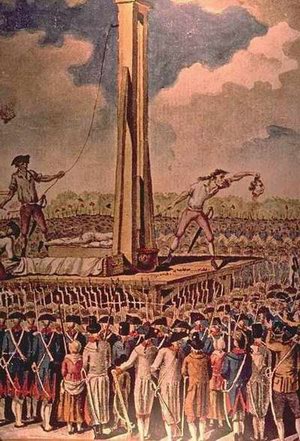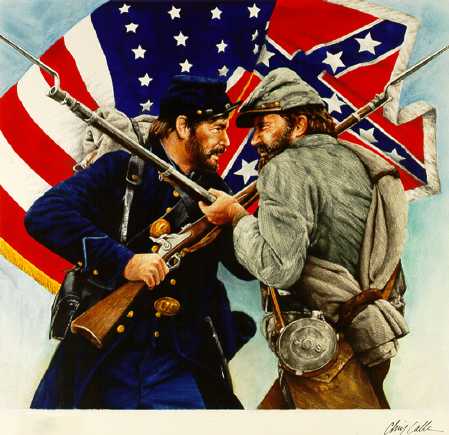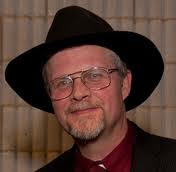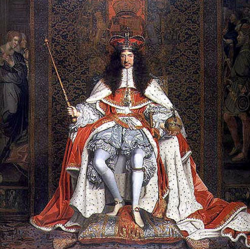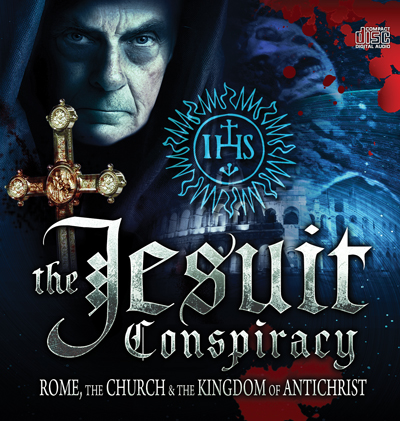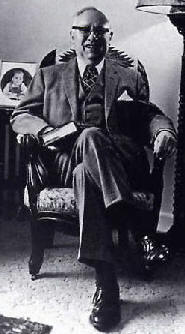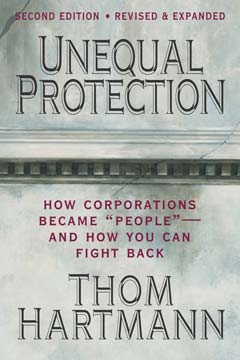 I would like to begin briefly with what many Western students of the slave trade often ignore: the Mohammedans’ involvement in kidnapping and selling African slaves. What The Nation of Islam often ignores is that Mohammedans have been kidnapping Africans and making slaves of them since at the earliest, the time of Mohammed himself and even after the slave trade was abolished in the white countries, the Mohammedans continued to kidnap and trade prolifically under Mohammed Ali.[1] Also, the Negroes themselves practiced hereditary slavery such as the Ethiopians through purchase and war-prisoners from neighboring tribes.[2]
I would like to begin briefly with what many Western students of the slave trade often ignore: the Mohammedans’ involvement in kidnapping and selling African slaves. What The Nation of Islam often ignores is that Mohammedans have been kidnapping Africans and making slaves of them since at the earliest, the time of Mohammed himself and even after the slave trade was abolished in the white countries, the Mohammedans continued to kidnap and trade prolifically under Mohammed Ali.[1] Also, the Negroes themselves practiced hereditary slavery such as the Ethiopians through purchase and war-prisoners from neighboring tribes.[2]
But our concern is the Atlantic Slave Trade. Pope Nicholas V issued the papal bull Dum Diversas in 1452. This Bull granted Afonso V of Portugal the right to enslave “Saracens, pagans and any other unbelievers” to hereditary slavery. The Roman Church’s approval of the slave trade was reaffirmed and supplemented by Nicholas V’s Bull, Romanus Pontifex of 1455. These bulls served the justification for the subsequent centuries of slave trade and colonialism.
The two countries who first had their hands into the African slave trade were the Roman Catholic Portugal and Spain. Roman Catholic Portugal was the first to start stealing the Negroes with Antonio Gonzalez in 1434 A.D.[3] Gonzalez sold these slaves to Muslims (Prolific African slave traders) in southern Spain. Roman Catholic Spain was the first to become party with the Portuguese in this trade. At the beginning of the 16th century this trade became so large that thousands were taken from Africa annually.[4] When America was discovered in 1492 the Spaniards were the first to colonize it and began to enslave the Native Americans.[5] But they proved too weak to bear up under slave labor. It got so bad that even Roman Catholic clergymen protested it![6] A stronger slave was needed, and thus the Negro was looked upon as prey. Thus in 1503 A.D. and 1510 A.D. the Spaniards began the Negro slave trade to the Americas.
In 1562, England under Queen Elizabeth legalized the purchase of Negro slaves but there was not much demand for them at the time due to unsuccessful English Colonization (It would not be until the 17th century that the Puritan English Colonies would succeed). Even the Dutch slave ship that landed between 1619-1620 in Virginia was on behalf of Spanish Colonies.[7] Immediately after this, all the major commercialized countries of the world, and sadly Protestant Governments participated in the criminal and unbiblical sin of the Negro slave trade. However, let it be remembered that it was the Roman Church that wet the appetites of all the other countries who participated in it, the South did not participate in it (My ancestor’s State of Virginia never sent a single vessel), and as we shall see later, the Jesuits were behind the English Slave Trade.[8]
Blake speaks to the issue of Elizabeth with more detail,
“The first importation of slaves from Africa by the English was in 1562, in the reign of Elizabeth. This great princess seems on the very commencement of the trade to have questioned its lawfulness; to have entertained a religious scruple concerning it, and, indeed, to have revolted at the very thought of it. She seems to have been aware of the evils to which its continuance might lead, or that, if it were sanctioned, the most unjustifiable means might be made use of to procure the persons of the natives of Africa. And in what light she would have viewed any acts of this kind, had they taken place, we may conjecture from this fact; that when Captain (afterwards Sir John) Hawkins returned from his first voyage to Africa and Hispaniola, whither he had carried slaves, she sent for him, and, as we learn from Hill’s Naval History, expressed her concern lest any of the Africans should be carried off without their free consent, declaring that “It would be detestable, and call down the vengeance of Heaven upon the undertakers.” Captain Hawkins promised to comply with the injunctions of Elizabeth in this respect. But he did not keep his word; for when he went to Africa again, he seized many of the inhabitants, and carried them off as slaves, which occasioned Hill, in the account he gives of his voyage, to use these remarkable words: “Here began the horrid practice of forcing the Africans into slavery, an injustice and barbarity which, so sure as there is vengeance in heaven for the worst of crimes, will some time be the destruction of all who allow or encourage it.” [9] [10]
Elizabeth resisted the African slave trade. No charter was made by her for these actions and none existed in England until 1618. Therefore these actions must be looked upon as piracy. It must be remembered that Hawkins did indeed kidnap Africans[11] but it must also be understood that he did it against the will of his sovereign Queen. One good indication that Hawkins was not on good terms with Elizabeth at this time was his involvement in a conspiracy with Philip II to assassinate Elizabeth. Though he did not go through with it, he was originally interested in the plot and cooperated with it. Now when the trade began to boom in the mid 1600s this gave impetus for many Negroes to kidnap each other and for rival tribes to make prisoners of each other to sell to the Europeans on the coast. The trade became so big that factories were created to make the entire African trade of wax and ivory and slaves more efficient.[12]
Just like the derelicts who worked the slave ships, the men who would be willing to work these factories were also men of ill repute. Blake says,
“The European subordinates of the establishment consisted of clerks, bookkeepers, warehousemen, artificers, mechanics, gunners, and private soldiers, all of whom had particular quarters assigned for their abode, and lived under military discipline. The soldiers employed in the service of the different African companies were mostly invalids, and persons who had been dismissed from the army on account of bad conduct. Destitute of the means of subsistence at home, such men willingly engaged to go to the coast of Africa, where they knew they would be permitted to lead a life of ease, indolence, and licentiousness, and be exposed to no danger except that of a deadly climate, which was in reality the most certain and inevitable one that they could anywhere encounter.” [13]
At the end of the slave trade Africa even had armies of men to hunt and capture other Africans to be sold into slavery.
Blake says,
“The first attempt by the British to establish a regular trade on the African coast, was made in the year 1618, when James L granted an exclusive charter to Sir Robert Rich, and some other merchants ofLondon, for raising a joint stock company to trade to Guinea. The profits not being found to answer their expectations, the charter was suffered to expire.
In 1631, Charles I. granted a second charter to Richard Young, Sir Ken elm Digby, and sundry merchants, to enjoy the exclusive trade to the coast of Guinea, between Cape Blanco and the Cape of Good Hope, for a period of thirty-one years. As the English had by this time began the settlement of plantations in the West Indies, Negroes were in general demand; and the company erected on the African coast, forts and warehouses, to protect their commerce. Private adventurers and interlopers of all nations broke in upon them, and forced the trade open, and so it continued until after the restoration of Charles II. In 1662, a third exclusive company was incorporated, consisting of many persons of high rank and distinction, at the head of whom was the king’s brother, the Duke of York. This company undertook to supply the English plantations with 3000 negroes, annually. In 1664, all the Dutch forts on the African coast but two were captured by the English; but in the following year they were retaken by the Dutch Admiral, De Ruyter, who also seized one of the forts belonging to the English company. In 1672, the company surrendered their charter. [FOR A BETTER ONE!-DS]
The same year, 1672, the fourth and last exclusive company was established. It was dignified by the title of the Royal African Company, and had among the stockholders, the king, the duke of York, and many other persons of high rank. The capital was £111,000, and was raised in nine months. They paid £35,000 for the forts of the old company.[SEE!-DS] Besides the traffic in slaves, they imported into England great quantities of gold. In 1673, 50,000 guineas, (named from the country), were coined. They also imported redwood, ivory, wax, &cut ., and- exported to the value of £70,000, annually, in English goods.
The revolution of 1688 upset the exclusive privileges of this company. By the 1st William and Mary, the African, and all other exclusive companies not authorized by parliament were abolished. The company, however, continued its operations.”[14]
It is interesting that the year that England considered the African slave trade (1618) was the beginning of the 30 Years War. As we see from Blake, slavery does not flourish under James I but it was considered. Elizabeth did no such thing. This is indicative of James’ personality. He did in fact reject papal authority and the Jesuits did try to assassinate him with the Gunpowder plot. However, it was only because of his personal prerogative to sustain his powers as an absolute Monarch and head of the Church. He persecuted Protestant Puritans in England and he created havoc among the Protestants in Scotland. King James plotted against the Reformation. James passed the Black Acts (1584) to impose royal authority over the Kirk between 1584 and 1603. This Act prohibited ecclesiastical assemblies without the King’s consent; thus attacking previous Protestant legislation. Between 1618-1621, James increased his pressures against the Reformation. The Reformed Presbytery says,
“Thus, after several former attempts to this effect, was episcopacy again established, and prelates lording over GOD’S heritage advanced, imposing their Popish ceremonies, which in that pretended assembly convened at Perth, anno 1618, were enacted, and afterwards ratified in a subsequent parliament, in the year 1621.”[15]
I understand that the Protestant Elizabethan “Golden Age” flourished under his reign but James was no Protestant Christian. He was a Crypto-Catholic at heart. He openly rejected the Protestant upbringing he received from George Buchanan with his wicked Black Acts.
Charles I was also no Protestant. He was a crypto-catholic. He continued his Father’s attack on the Scottish Reformation through his Crypto-Catholic tyrant Bishop William Laud. We all know the humiliation he received under Cromwell but also, in 1637-1638 the Covenanter Protestants in Scotland rose up against the efforts of their King and renewed the Reformed National Covenant in March of 1638. Charles I refused to allow Protestants to officially assemble in England for the purpose of creating Religious Reform and Uniformity through extensive dialogue and debate. The Protestants were forced to pass a bill through the House of Commons with the agreement of the House of Lords without the King’s consent in June of 1643. In 1643 the Westminster Assembly began. The Scottish Covenanters continued to resist the impositions of popish ceremonies upon their nation and in 1646 Charles I surrendered to the Covenanter army after his General Montrose was defeated at Newark.
Later, Charles I would be beheaded by Cromwell.
Charles II was also no Protestant; that wretch, that covenant breaking, treasonous, backstabbing bastard comes to the throne at his Father’s execution in 1649. Charles II was appointed King upon condition of him taking the Covenants. The Reformed Presbytery states,
“Upon which the parliament of Scotland, on the 5th of February, 1649, caused proclaim his son Charles II, king of Great Britain, France, Ireland (which title he had assumed himself at the Hague, as soon as the report of his father’s death came to his ears), promising their fidelity and defence of his person and authority, according to the National Covenant, and the Solemn League and Covenant. And in the same time declaring, that before he be admitted to the exercise of the royal power, he shall give security for the preservation and maintenance of the true reformed religion, and unity of the kingdoms, now established, by laws both civil and ecclesiastical, according to the covenants: which security for religion and liberty, at the first proposed treaty at the Hague, he deferred to grant, and afterward postponed the signing of the treaty at Breda, when everything was agreed upon, from the great hopes he entertained of accomplishing his design, without acquiescing with their demand from Montrose’s expedition, whom he had sent into Scotland with an army, in order to prepare his way into that kingdom, by devastation with fire and sword. But this intrigue not succeeding, he found himself obliged to comply with all their proposals, and signed the treaty. This treaty the king did in effect break, before he left Breda, by communicating after the Episcopal manner, contrary to the express warning and remonstrance of the commissioners from the church of Scotland, who went to him, and showed him his sin in so doing, and how inconsistent it was with his own concessions in the sent treaty; and an evidence that he had no intention to perform what he had agreed to, but dissembled with GOD and man; and he, on the other hand, put them off with sham excuses and professions; and so, from their too much credulity to his fraudulent professions and promises all along, they brought him over to Scotland, and before his landing in this kingdom, he takes the covenant at Spey, on the 23rd of June, 1649, by his oath subjoined in allowance and approbation of the Covenants National, and Solemn League, obliging himself faithfully to prosecute the ends thereof in his station and calling; and for himself and successors, he shall agree to all acts of parliament enjoining the same, and establishing presbyterial church government, the directory for worship, confession of faith and catechisms, in the kingdom of Scotland, as approven by the General Assemblies of this kirk, and parliament of this kingdom. And for their further satisfaction, according to the act of the West Kirk, Edinburgh, August 13th, 1650, approven the same day by the committee of estates, he emitted a declaration at Dunfermline, by profession, fully and heartily acquiescing with all their demands; all which afterward served for nothing but as a lasting monument of his horrid perjury, wicked dissimulation, and mockery of God and man. And even then, when this declaration was published, he had formed a design for bringing in the enemies of the covenant, and work of reformation, both into the army and judicatories, and for dividing the Presbyterians among themselves. And this he effectually managed for both foresaid ends, by the public resolutions, on the 14th of December, that same year, 1650. This woful and prime step of defection, so contrary to the word, and injurious to the work of God, was faithfully testified against by many, both ministers, and whole presbyteries, who were sensible of the present sinfulness and evil of it, and foresaw the bitter and dismal consequences that followed upon it.”[16]
As Blake mentioned, Charles II had a brother, the Duke of York (Later King James II), who was a flaming Roman Catholic and a persecutor of Protestants. He enjoyed killing Scottish Covenanters and set up the infamous Royal African Company devoted to the African Slave Trade. Later, when James the Duke of York became King, he pursued anti-Protestant Legislation in proportions in much greater degree than even his wicked predecessors. James II allowed Romanists into the highest offices in government, welcomed the Papacy’s envoys, and even had a Jesuit confessor named Edward Petre! Even his crypto-catholic Anglican brothers objected to this. Now the Jesuits were in control of the English slave trade that could now be blamed on the Protestants while all the time James II was an open Romanist and Jesuit conspirator pulling all the strings.
Yet what happened when the Protestant King and Queen William and Mary came to power in England? The African slave trade is abolished and made illegal.
Why was I not taught this in Public School as I was being made ashamed to be a member of White Anglo Protestant Culture? I’ll tell you why: The Roman Catholic Hierarchy controls the American Educational system for the purpose of destroying the White Anglo Culture that overturned and stripped the Papacy of its Power and Influence in the world 5 centuries ago.
Now who were the American slave traders?
Notes on the History of Slavery in Massachusetts (1866) by George Henry Moore says,
“A subsequent entry in Winthrop’s Journal gives us another glimpse of the subject, Feb. 26, 1638.
“Mr. Peirce, in the Salem ship, the Desire, returned from the West Indies after seven months. He had been at Providence, and brought some cotton, and tobacco, and negroes, etc., from thence, and salt from Tertugos;” Winthrop, 1., 254. He adds to this account that “Dry fish and strong liquors are the only commodities for those parts. He met there two men-of-war, set forth by the lords, etc., of Providence with letters of mart, who had taken divers prizes from the Spaniard and many negroes.” Long afterwards Dr. Belknap said of the slave-trade, that the rum distilled in Massachusetts was “the mainspring of this traffick.” M. H. S. Coll., i., iv., 197.”[17]
So here we see that it was the New England Colonies who first began the slave trade, not the Southern Colonies. Not only so, they even passed a law, legalizing it in 1641. Blake states that the 1641 Massachusetts law did not provide an absolute condoning of the slave trade but,
“there shall never be any bond slavery, villeinage, nor captivity among us, unless it be for lawful captives, taken in just wars, and such strangers as willingly sell themselves or are sold unto us, and these shall have all the liberties and Christian usages which the law of God established in Israel; requires. This exempts none from servitude who shall be judged thereto by authority.”[18]
I think my Southern brethren in their zeal to expose the crimes of the North, step on their own feet just a bit. The New England Puritans, at least the first generation, were our brethren in religion and race. We need not unjustly smear them in our indignation, however justified that indignation may be. However good the intentions of the Puritans may have been, the Yankee industrialists, adamant to make a profit from the slave trade, pushed on with their production of rum to be traded for slaves and goods.
Records of the Colony of Rhode Island and Providence Plantations in New England, Vol. 6 (1861), Ed. John Russell Bartlett states,
“This little colony, only, for more than thirty years past, have annually sent about eighteen sail of vessels to the coast, which have carried about eighteen hundred hogsheads of rum, together with a small quantity of provisions and some other articles, which have been sold for slaves, gold dust, elephants’ teeth, camwood…The slaves have been sold in the English islands, in Carolina and Virginia, for bills of exchange, and the other articles have been sent to Europe; and by this trade alone, remittances have been made from this colony to Great Britain, to the value of about £40,000, yearly; and this rum, carried to the coast, is so far from prejudicing the British trade thither, that it may be said rather to promote it; for as soon as our rum vessels arrive, they exchange away some of the rum with the traders from Britain, for a quantity of dry goods, with which each of them sort their cargoes to their mutual advantage… This distillery is the main hinge upon which the trade of the colony turns, and many hundreds of persons depend immediately upon it for a subsistence.”[19]
The United States and Africa: A History by Peter Duignan states,
“Soon the Yankee trader was a familiar sight from the Cape of Good Hope to Cape Guardafui and at Madagascar and the offshore islands. Nathaniel Isaacs, an enterprising Anglo-Jewish trader, explorer, adventurer, and inadvertent empire builder, said in commenting upon a visit to an obscure port in 1831:
The post of Lamoo [Lamy Kenya] is free to all nations, but few have visited it, except the enterprising Americans, whose star-spangled banner may be seen streaming in the wind, where other nations, not even my own country, would not deign to traffic. America is the forerunner of commerce in new countries, and she enjoys the sweets which they afford.”[20]
The American Slave-Trade by John Randolph Spears states,
“This story, sworn to before United States Consul George William Gordon, was repeated by Consul Henry A. Wise (of Virginia) in an official communication to Secretary of State James Buchanan, under date of May 1, 1845. James K. Polk was then President of the United States, and this story and other stories of like character were sent to the Congress of the United States in House Ex. Doc. 61, 30th Congress second session, and Senate Ex. Doc. 28 of the same session.
Said Consul Wise in an official letter dated February 18, 1845:
“I beseech, I implore, the President of the United States to take a decided stand on this subject. You have no conception of the bold effrontery and the flagrant outrages of the African slave-trade, and of the shameless manner in which its worst crimes are licensed here. And every patriot in our land would blush for our country did he know and see, as I do, how our own citizens sail and sell our flag to the uses and abuses of that accursed traffic. We are a ‘by-word among nations’—the only people who can now fetch and carry any and everything for the slave-trade . . . and, because we are the only people who can, are we to allow our proudest privilege to be perverted, and to pervert our own glorious flag into the pirate’s flag?”[21]
Even after the slave trade had been formally abolished Yankees still wanted to profit from it.
“Your attention is earnestly invited to an amendment of our existing laws relating to the African slave-trade, with a view to the effectual suppression of that barbarous traffic. It is not to be denied that this trade is still, in part, carried on by means of vessels built in the United States and owned or navigated by some of our citizens.”
Here we see then that the North American participation with the Slave Trade was a Yankee affair, performed by Yankee vessels flying the Stars and Stripes not the Confederate flag.
Objection: New England Could not have been so productive in the slave trade without the Southern demand!
Ans. Demand? First, as we shall see later, this trade had to be forced on us. Second, Robert William Fogel and Stanley Lewis Engerman’s Time on the Cross: The Economics of American Negro Slavery shows that the United States possessed only 6% of the slaves taken in the entire slave trade from 1500 A.D. to 1870 A.D. Brazil possessed 38%, the British Caribbean 17%, the French Caribbean 17%, and Spanish America 17%.[22] Why is it then, that the only major players in this trade, who themselves did not kidnap these Africans, and possessed the lowest percentage of slaves were the only major slave holding country, invaded, tortured, gang raped and murdered supposedly for owning slaves? Could it be because they were white Protestants pursuant unto the Jesuit Inquisitional Counter-Reformation?
After 1800 the South was no longer a market for slaves. Moreover, the Constitution of the Confederate States of America states in Article I, Section 9 – “Limits on Congress, Bill of Rights” states,
“1. The importation of negroes of the African race from any foreign country other than the slaveholding States or Territories of the United States of America, is hereby forbidden; and Congress is required to pass such laws as shall effectually prevent the same.”
In contrast to the Yankee flesh market we have the pleasant record of the South. In 1772, American colonies beseeched King George to let them outlaw African Slavery. He refused and in so doing showed that he was plotting a race war against the Protestant Colonies to stall any attempt of an Independent Protestant Nation. His new league with the Romanists can be seen in his “Intolerable Acts” of 1774 as described by the Colonialists. The most aggravated offense came with his Quebec Act of 1774. This was an Act of the Parliament of Great Britain (citation 14 Geo. III c. 83) for the province of Quebec. It established Catholicism in Quebec and made Catholics equals in the British Colonies in America and repealed Protestant legislation in the English Protestant Oath of Allegiance. Blake says,
“In the year 1772, a disposition favorable to the oppressed Africans became very generally manifest in some of the American Provinces. The house of burgesses of Virginia even presented a petition to the king, beseeching his majesty to remove all those restraints on his governors of that colony, which inhibited their assent to such laws as might check that inhuman and impolitic commerce, the slave-trade: and it is remarkable that the refusal of the British government to permit the colonists to exclude slaves from among them bylaw, was enumerated afterwards among the public reasons for separating from the mother country distinguished dye, he is now exciting those very people to rise in arms among us, and to purchase that liberty of which he has deprived them, by murdering the people upon whom he also obtruded them, thus paying off former crimes, committed against the liberties of one people, with crimes which he urges them to commit against the lives of another.” (See the fac-simile of this draft in Jefferson’s Correspondence.) But this passage was struck out when the Declaration of Independence was adopted.”[23]
Virginia and other colonies in North America were places of refuge for Protestants who were escaping the Inquisition and other Crypto-Catholic religious persecution. Our original colony had made the Inquisition and the Council of Trent powerless in these lands and was a bastion of the Protestant Religion. The Jesuits were not going to stand by and watch this happen. I want to survey some points of history with you:
1. The Colony of Virginia had no ships involved in any foreign slave trade.
2. 1726 A.D. – Virginian statesman Mr. Drysdale annexed a tax on the African slave traders in order to decrease the influx of the slaves coming into the colonies yet it was repealed by the English Royal African Company.[24]
3. 1769 A.D. – The House of Burgesses were the first assembly of Colonial representatives in North America which was established by the Virginia Company. It passed an act for raising the duty on all slaves imported, to twenty per cent. “The records of the Executive Department show that this law was vetoed by the king, and declared repealed by a proclamation of William Nelson, President of the Council, April 3d, 1771.”[25]
4. 1772 A.D. – The House of Burgesses Petitioned,
“Resolved, that an humble address be prepared to be presented to his Majesty, to express the high opinion we entertain of his benevolent intentions towards his subjects in the colonies, and that we are thereby induced to ask his paternal assistance in averting a calamity of a most alarming nature; that the importation of negroes from Africa has long been considered as, a trade of great inhumanity, and under its present encouragement may endanger the existence of his American dominions; that self-preservation, therefore, urges us to implore him to remove all restraints on his Governors from passing acts of Assembly which are intended to check this pernicious commerce”.[26]
5. 1776 A.D. – Virginia declared her independence from Great Britain. The Constitution and Bill of Rights were drawn up for the State of Virginia where we read in the section detailing the grievances against King George III, “By prompting our negroes to rise in arms against us, those very negroes whom, by an inhuman use of his negative, he hath refused us permission to exclude by law”.
6. 1778 A.D. – On Oct. 5, 1778, Patrick Henry, Governor of the Commonwealth of Virginia, passed An Act for the Preventing the Farther Importation of Slaves, thus preventing of the African slave trade.[27] Virginia was then the first province on earth to abolish the African slave trade and make it a penal offence.[28]
Why Were The Africans Forced On Virginia ?
1. During the Suppression of the Jesuits in the 1760s and the 1770s in Europe, the Jesuits fled to England and were received by King George III.[29]
2. Jeremiah Dyson and Charles Jenkinson were known as “the Jesuits of the Treasury”, and the Treasury was the secret dictator behind the throne, which used Grenville as their tool to persecute the American Colonies with their Grenville’s Stamp Act.[30] Dyson also protested the repealing of the said Grenville’s Stamp Act and supported the other measures drawn up by Lord North against the American Colonies.[31] In 1774, Lord North, the ringleader of the Jesuit Treasury,[32] defended the Intolerable Acts in the House of Commons; and let us not forget the Quebec Act which was flagrantly Pro-Catholic, and went against King George’s Protestant Oath which he had taken at his Coronation.
Thus King George was in league with the Jesuits pursuant unto the Counter-Reformation agenda. The Jesuits controlled and used King George and the Royal African Company to flood Virginia with African slaves to kill their citizens just like what happened with the Haitian Revolution. The Jesuits are the real criminals not the White Anglo Protestants in Virginia. On the contrary, the Virginians were the first people on earth to abolish the slave trade. The Jesuit race-war failed to arise but the Africans would later be used as a justification to invade and impoverish the South in the Civil War.
The Wanderer is sometimes accused of being a Southern Slave vessel. However, the facts tell a different story. It was built in the north, flew the New York Yacht Club Flag and was captained by a man from New York.
In North America, Virginia was the first to abolish the Slave Trade under Patrick Henry and the English were led by Granville Sharp, Thomas Clarkson, and William Wilberforce. All white Protestant Christians. After abolition, we tried to send Africans back to Africa with Liberia and Monrovia.
Thus we have seen that the ever popular Yankee story that the Southerners kidnapped and enslaved Africans has turned out to be a myth. Not only so, it was the Yankees who were the real flesh merchants of the earth.
———————————————————————————————————————————————————-
[IMAGE] The above image is of the New England Slave Vessel, The USS Nightingale: http://en.wikipedia.org/wiki/USS_Nightingale_(1851)
[1] The History of Slavery and the Slave Trade, By William O. Blake, Chapter 8; http://books.google.com/books?id=g213AAAAMAAJ&printsec=frontcover&source=gbs_ge_summary_r&cad=0#v=onepage&q&f=false
[2] Ibid., 94
[3] Ibid.
[4] Ibid., 95
[5] Ibid., 95-96
[6] Ibid., 96
[7] Ibid., 98;
[8] Ibid., 98
[9] See The New and Complete American Encyclopedia (1808), Volume 4, Pg. 237; http://books.google.com/books?pg=PA237&lpg=PA237&dq=elizabeth,+it+would+be+detestable,+call+down&sig=VCeRzC9w2HgrJ5HVdJyhlcQZFbM&ei=Uo_IT5emFoqk8gSHxontDg&id=I80aAAAAYAAJ&ots=ybFbAbtblV#v=onepage&q&f=false
[10] Blake, 158
[11] Ibid., 108
[12] Ibid., 99
[13] Ibid., 100
[14] Ibid., 107
[15] Act, Declaration and Testimony, Part 1: http://www.covenanter.org/RefPres/actdeclarationandtestimony/actpart1.htm
[16] Ibid.
[17]http://books.google.com/books?ei=HFofUbXaD7OA2AXNyIHgAQ&dq=a+history+of+slavery+is+massachusetts&jtp=228&id=ohsEAAAAYAAJ#v=onepage&q&f=false, pages 5-6
[18] Pg. 370
[19]http://books.google.com/books?pg=PA381&lpg=PA381&dq=%22this+distillery+is+the+main+hinge+upon+which+the%22&sig=yA8hExG8WnovWartP_r5txUURiM&ei=-5wgUeruFuX4yQHE6YDQDA&id=ZsINAQAAMAAJ&ots=k_gSc2D43A#v=onepage&q&f=false, Page 380-381
[20]http://books.google.com/books?id=dDwUFhl-4EMC&pg=PA68&lpg=PA68&dq=%22enterprising+americans+whose+star-spangled%22&source=bl&ots=08rdUcbviH&sig=cqr4Lk1bIRHJN2mHCmLJWudruQc&hl=en&sa=X&ei=P6MgUYzrH4SMyAGGioDACA&ved=0CDAQ6AEwAA#v=onepage&q&f=false, page 68-69
[21]http://books.google.com/books?ei=5LkgUcG9CuaH2AXEuICYAQ&dq=american+slave+trader,+spear&jtp=81&id=XA4rAQAAIAAJ#v=onepage&q&f=false, page 81
[22]http://books.google.com/books?id=ScpPBinpzwoC&printsec=frontcover&dq=robert+fogel,+time+on+the+cross&hl=en&sa=X&ei=J6AgUePJEYTJygHD_oHADg&ved=0CDAQ6AEwAA#v=onepage&q&f=false, page 14
[23] Blake, 177
[24] R.L. Dabney, Defence of Virginia (New York: E.J. Hale and Son, 1867), 29
[25] Ibid., 47
[26] The General Assembly of the House of Burgesses, Journals-The House of Burgesses of Virginia (The Colonial Press, E. Waddy Co., 1770), 256
[27] William Waller Hening (editor), The Statutes at Large: A Collection of All the Laws of Virginia From the First Session of the Legislature in the Year 1619 , Volume IX (New York: W.G. Bartow, 1823), 471
[28] Dabney, 49
[29] Horace Walpole, Memoirs of the Reign of King George the Third Vol.3 (London: Richard Bentley, 1845), 47; http://archive.org/stream/memoirsreignkin08walpgoog#page/n70/mode/2up
[30] Horace Walpole, Memoirs of the Reign of King George the Third Vol.4 (London: Richard Bentley, 1845), 109-113; http://archive.org/stream/memoirsreignkingg04walp#page/109/mode/1up
[31] Stephen (Sir Leslie), Robert Blake, Christine Stephanie Nicholls, The Dictionary of National Biography, Volume 6, 300
[32] Great Britain. Public Record Office, Annual Report of the Deputy Keeper of the Public Records, Appendix to the Twenty-Fifth Report of the Deputy Keeper of the Public Records, 66; http://books.google.com/books?id=OYtIAAAAYAAJ&pg=RA2-PA66&lpg=RA2-PA66&dq=jeremiah+dyson,+lord+frederick+north&source=bl&ots=YuXRcLK_3T&sig=5Sz7R0gTaXqe4TkClcMFICWsNt4&hl=en#v=onepage&q&f=false



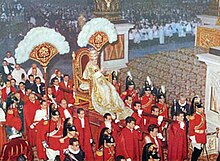
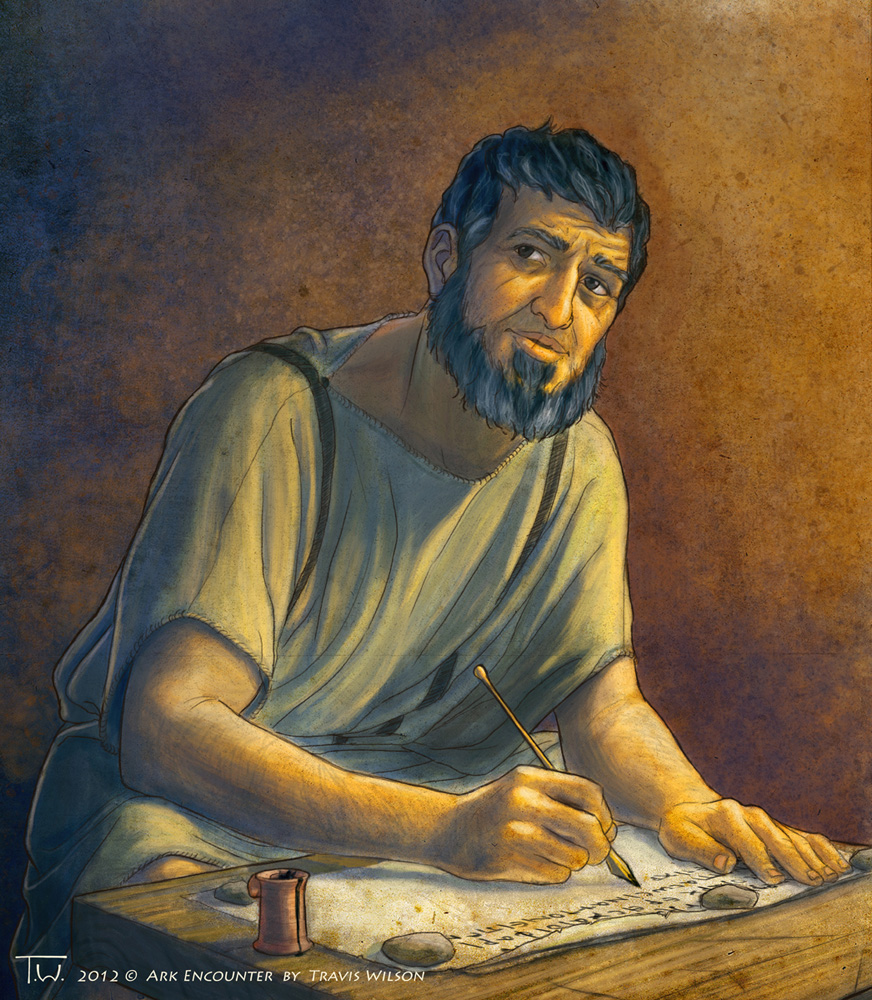
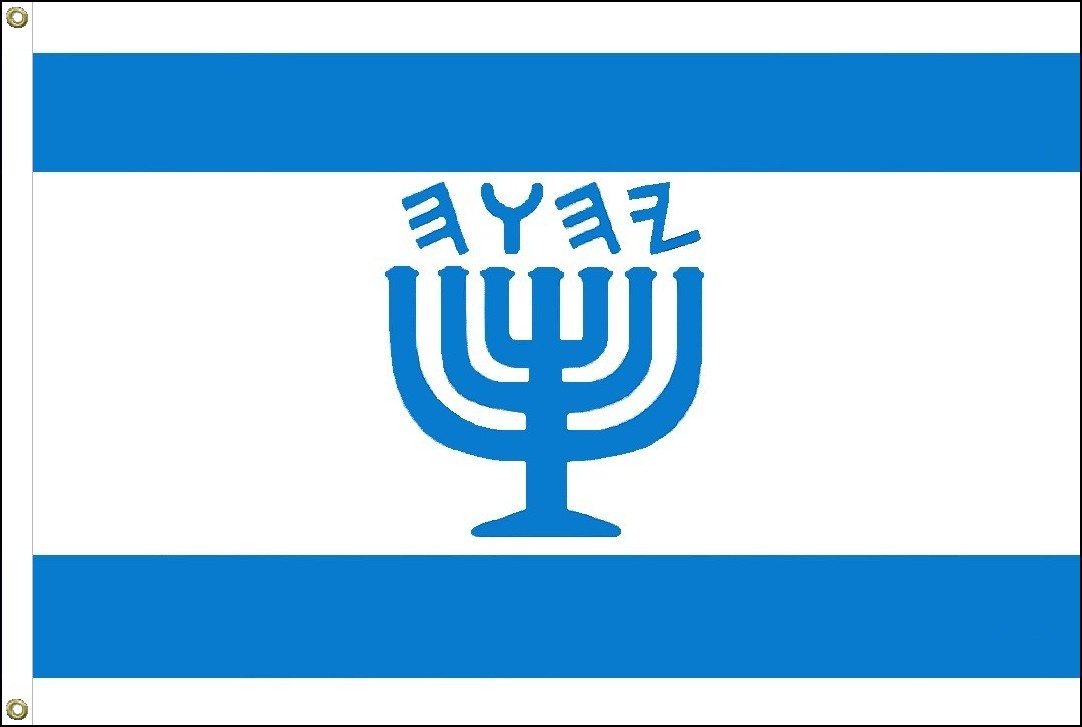

-1-.jpg)

